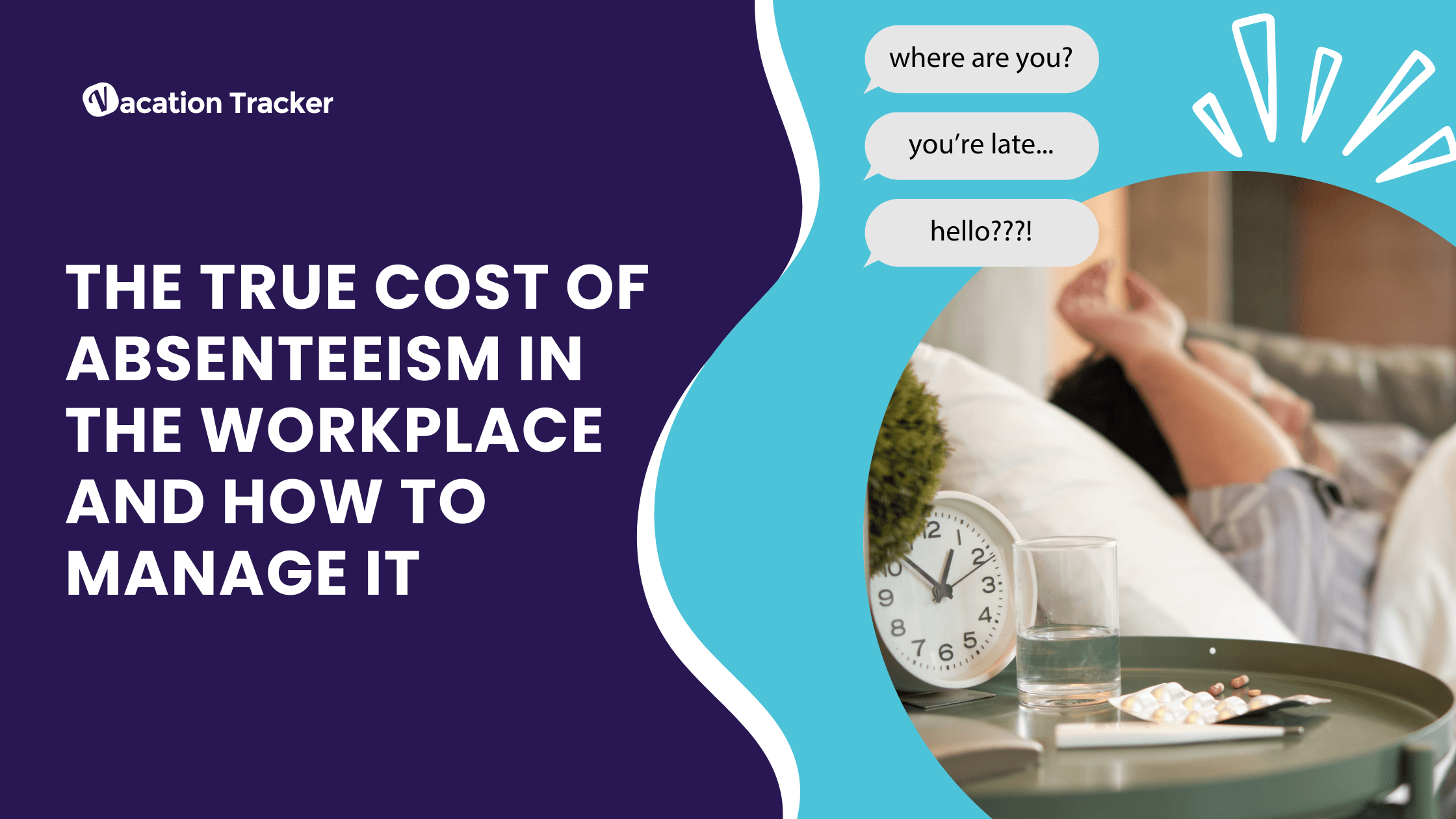Designing a Fair PTO Buyback Policy
Reading Time: 5 minutes
Table Of Contents
Some periods get quite busy, and taking time off doesn’t seem like a great option.
Letting the work pile up and ambush you the first day you come back from a break can cause more stress than going little by little each day, and then getting a proper vacation. Think of the future You for a change!
Others have no issues with the workload, but could use some extra cash — and would gladly trade the days off for additional income.
PTO buyback is a great perk that allows more flexibility to employees, letting them use their earned PTO the way they see fit.
However, there’s always a question of work-life balance, and how far people are willing to push themselves before reaching their breaking point and suffering from burnout.
This is why creating a PTO buyback policy deserves more attention and a specific rule-making process.
Let’s find the perfect balance together! Below, you’ll find out the ins and outs of PTO buyback necessary to create a comprehensive, legally solid, and fair policy. 📝
What Is PTO Buyback?
PTO buyback (or PTO payout) is an option where employees are paid for unused paid time off.
Employees are usually compensated for the accrued time they haven’t used at the end of the business year, or once they stop working at the company. Some companies allow PTO buyback year-round, provided that employees have earned them through the PTO accrual process.
How To Calculate The PTO Buyback Amount?
Here’s the most simple scenario depicting the PTO buyback process:
-
Jannet had 21 PTO days in 2023 but only used 14 days over the year, leaving her with 7 days of unused PTO;
-
Since Jannet is paid $150 per day, her PTO buyback amount will be 7*$150=$1050.
That was easy!
The formula looks the same for hourly workers: just multiply their hourly rate by the unused PTO hours.
Depending on the PTO policy a company implemented, there might be a PTO buyout cap that proposes the maximum amount employees can receive for unused PTO.
Back to the drawing board:
-
In Janet’s company, there’s a $600 cap for PTO payout. This means that she’ll be compensated for 4 unused PTO days;
-
Depending on what’s allowed at her workplace, Janet can transfer the remaining 3 days to the next year, donate them to some of her coworkers, or lose the days off.
Is PTO Buyback Mandatory?
In plenty of cases, everything regarding PTO is at employers’ discretion, since providing PTO isn’t a legal requirement. Still, state laws differ, and in some of them, PTO payout is a must.
PTO buyback is mandatory in the following countries:
- California;
- Colorado;
- Illinois;
- Indiana;
- Iowa;
- Louisiana;
- Maine;
- Massachusetts;
- Montana;
- Nebraska;
- Nevada;
- North Dakota;
- Rhode Island.
How To Tax PTO Payout (Buyback)?
In countries that require PTO buyback, PTO is considered a type of earned wage and needs to be taxed accordingly.
The IRS mandates that PTO payout is taxed as supplemental income at a 22% rate (see the Income Tax Withholding on Sick Pay section).
Let’s see what this would look like in real life:
-
Mark earns an hourly wage of $25 per hour and has 15 hours of unused PTO;
-
Pre-tax PTO buyback would be $25*15=$375;
-
Calculate the amount of taxes for this PTO buyback: $375*0,22=$82,5;
-
After taxes, the final amount of PTO buyback would be $375-$82,5=$292.5.
Keep in mind that company rules and state policies have a say too, and consult the professionals to obtain the precise information and directions that apply to your case.
What Else Can Happen With Unused PTO?
In case a worker doesn’t spend or cash out all of their PTO within the pre-determined time frame, there are several options as to what happens with unused PTO:
-
It expires and can’t be used anymore;
-
It can be rolled over to the next year;
-
Workers can choose to donate their PTO;
-
There’s an unlimited PTO policy, so there’s nothing to expire.
Use-It-Or-Lose-It PTO Policy
Should you check the expiration date on your PTO as well?
The “Use-it-or-lose-it” policy treats days off as perishable goods; if you don’t use your vacation days in time (most often by the end of the year), you lose them. There’s no possibility to donate them to coworkers, transfer them to the following year, or cash them out.
This policy is a great way for employers to encourage work-life balance and prevent burnout, making it a great employee retention asset.
Keep in mind that the “use-it-or-lose-it” policy is explicitly banned in California, Colorado, and Montana; in Nebraska, Nevada, and Wyoming, this policy is prohibited in certain cases.
Other countries either don’t mention “use-it-or-lose-it” policies or allow it. In any case, pay attention to laws that treat accrued time off as earned wages. To avoid wage theft accusations, you may still need to allow PTO buyback.
PTO Rollover Policy
Can you save your paid time off for a rainy day?
PTO rollover policies let you keep what you haven’t used for the next year. Depending on the company’s leave policy, there might be a limit on the number of hours you can transfer to the following year.
This policy allows employees to use their PTO how they see fit and has many other pros. Still, hoarding PTO may be a bad idea because, if used all at once, it may disrupt the workflow. The lack of timely rest may also increase employee stress and decrease productivity. Rollover limits let everyone win, allowing both fairness and flexibility to all parties.
Learn more in our detailed guide to PTO rollovers!
PTO Donation Policy
Leave donation (or PTO donation) allows the employees to gift the PTO they’ve accrued to their coworkers.
The IRS allows leave donations in two cases: for medical emergency exceptions and major disaster exceptions.
Donating unused time off may cause some bickering and a toxic workplace atmosphere in case someone feels unappreciated and neglected, and others act entitled. That’s why it’s best to make everything regarding PTO donation anonymous, impersonal, and based on the employees’ goodwill.
The Issue With Unlimited PTO Policy Buyback
Infinite money and time off glitch, or a double-edged sword?
In theory, unlimited PTO policies let employees take time off whenever they want, without it impacting their salaries. In practice, unlimited PTO is a perk employers flaunt to attract talent, but they don’t say the silent part out loud:
If the employer decides to implement an unlimited PTO policy, they don’t have to track accrued time off or pay the employees for unused PTO. This makes PTO buyback impossible.
Employers should tread carefully; unlimited PTO is an awesome workplace benefit you shouldn’t shy away from, but double-check the wage laws first.
In the majority of U.S. states, PTO payout is a must once you agree to award any amount of PTO to employees.
Creating A PTO Buyback Policy - The Checklist
Let’s create an essential PTO buyback checklist with what we know:
-
Review the existing PTO policies — The rules you already have in place will serve as a framework to build the buyback policy. Or, you might notice they need to be refurbished and new rules added to accommodate the PTO buyback policy better.
-
Define the purpose of your PTO buyback policy — Companies create buyback policies to provide additional flexibility to the existing workforce, attract new staff, and protect themselves from financial liabilities and legal issues. See what your company needs and act accordingly.
-
Review the state and federal laws — To get the picture of what’s legally possible, take a look at all rules that apply first. That way, you hopefully won’t have to change a lot of your policies when you consult with legal experts later.
-
Determine the eligibility criteria — Decide who can request a PTO buyback - do they need to accrue the PTO first, or spend a certain time at the company to be awarded this as a perk?
-
Set the PTO buyback rates — The employers usually decide to make things honest and simple and make the buyback rate equal to the employee’s usual daily/hourly rate;
-
Impose time constraints — Decide when the employees can request and receive the payout: at the end of the year, quarter, bi-annually, or on a rolling basis.
-
Get legal counsel — Before putting anything onto paper, contact legal experts and make sure your PTO buyback policy complies with all labor laws that apply, and specific rules don’t clash with each other.
-
Announce the policy — Share the first draft with everyone this policy may impact, and hear out the impressions: there might be something you forgot to include.
-
Adjust and implement the buyback policy — Apply the sound advice you may have received, set things in motion, and start applying the policy rules.
-
Track the PTO diligently! Last, but not least: a precise PTO tracking tool stands at the core of any solid PTO policy.

Anja Milovanovic
A journalist turned content writer – Anja uses her investigative skills to produce high-quality SaaS, Marketing, and HR content.



